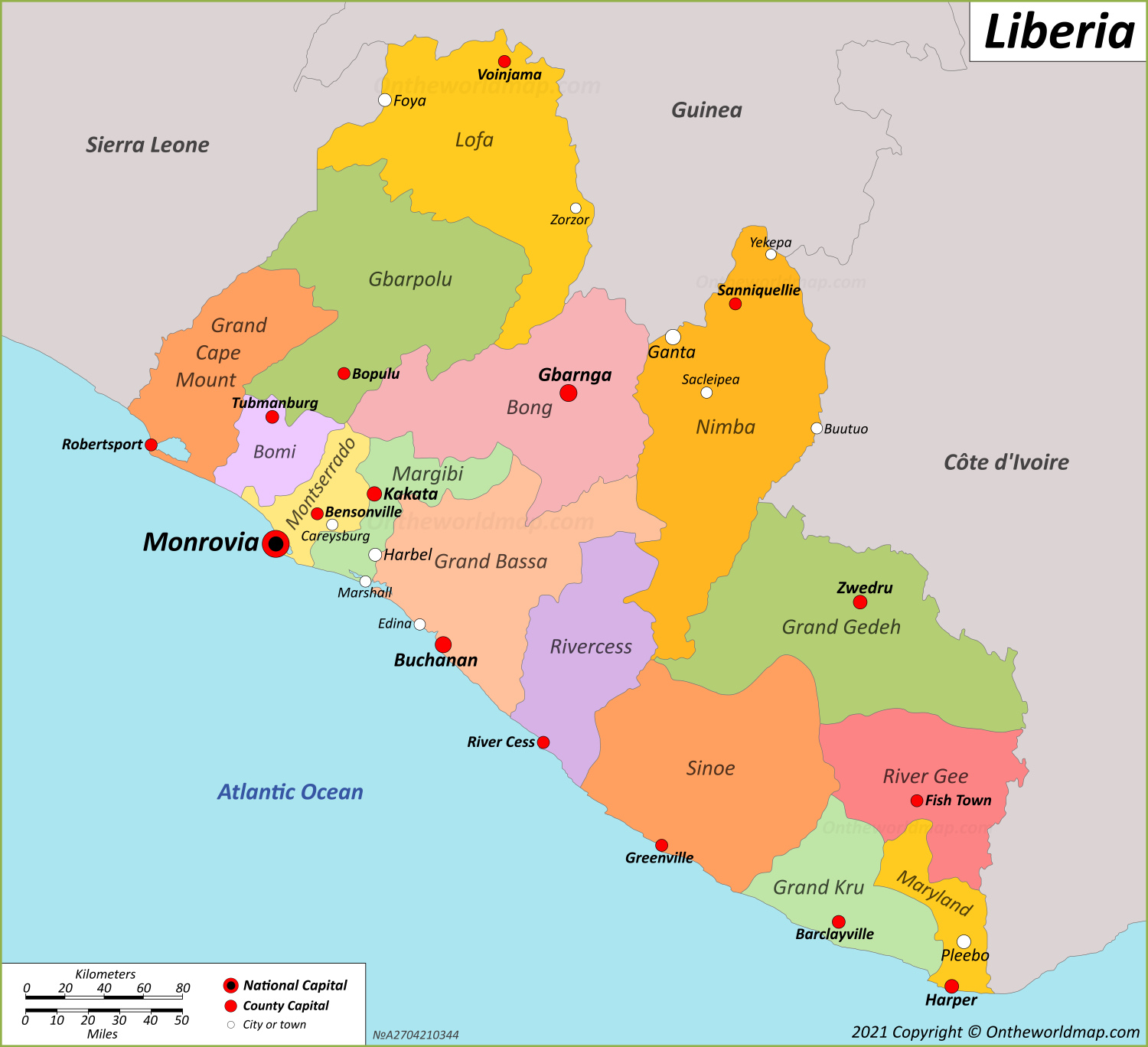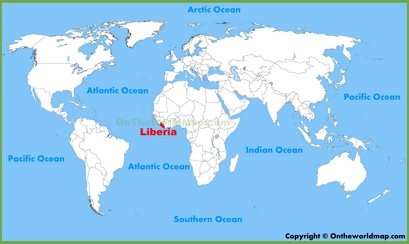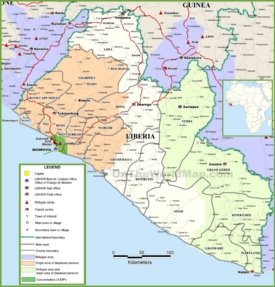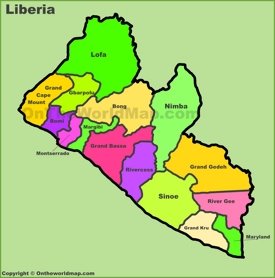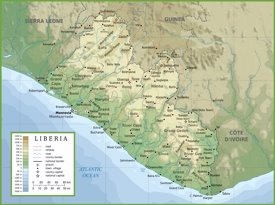Liberia Map
Description:
This map shows governmental boundaries of countries; counties, county capital cities, and major cities and towns in Liberia.
Size: 1500x1368px / 412 Kb
Author: Ontheworldmap.com
You may download, print or use the above map for educational, personal and non-commercial purposes. Attribution is required. For any website, blog, scientific research or e-book, you must place a hyperlink (to this page) with an attribution next to the image used.
Online Map of Liberia
Detailed Maps of Liberia
About Liberia
Liberia, located on the west coast of Africa, is bordered by Sierra Leone to the northwest, Guinea to the north, and Cote d'Ivoire to the east. The Atlantic Ocean lies to the south, providing the country with a significant coastline.
The capital and largest city, Monrovia, serves as the political and economic center. Founded in 1822, Monrovia is where most of Liberia's administrative and commercial activities are centered.
Other significant cities include Gbarnga, Buchanan, and Kakata, which contribute to regional trade and the local economy.
Liberia's economy relies heavily on natural resources, including rubber, iron ore, and timber. Agriculture plays an important role, with rice and cassava being the main crops. The country is also involved in palm oil production and cocoa cultivation. However, Liberia faces challenges such as high unemployment and infrastructure deficits that hinder economic growth.
The Government of Liberia functions as a republic, with the President as both head of state and government. Liberia's legal system combines common law, statutory law, and customary law to reflect various societal influences. The official language is English, which facilitates administrative and educational functions.
Education in Liberia faces serious obstacles, including inadequate infrastructure and limited resources, which affects literacy and overall achievement. Health care also faces a lack of funds and personnel, which affects the health status of the population. Despite these challenges, Liberia continues to implement development initiatives aimed at improving living standards and economic stability.
The Facts:
Capital: Monrovia.
Area: 43,000 sq mi (111,369 sq km).
Population: ~ 5,500,000.
Largest Cities: Monrovia, Gbarnga, Buchanan, Ganta, Kakata, Zwedru, Harbel, Harper, Pleebo, Foya.
Official language: English.
Currency: Liberian dollar (LRD).
Counties of Liberia: Bomi, Bong, Gbarpolu, Grand Bassa, Grand Cape Mount, Grand Gedeh, Grand Kru, Lofa, Margibi, Maryland, Montserrado, Nimba, Rivercess, River Gee, Sinoe.
Geography of Liberia
Liberia's geography is characterized by a diverse landscape divided into three distinct regions: the coastal plains, the hills, and the northern plateaus. The coastal plains extend inland for about 30 miles and are characterized by mangroves and lagoons. Inland, the hills transition to the northern plateaus, which reach an elevation of 1,440 meters in the Nimba Range.
Liberia has a tropical climate with distinct wet and dry seasons. The wet season, from May to October, brings heavy rainfall, especially along the coast. During the dry season, from November to April, rainfall decreases and temperatures rise. Humidity remains high all year round. These climatic conditions favor the development of dense tropical rain forests, which cover a large part of the country.
Brief History of Liberia
Liberia's history began with the settlement of freed African American slaves in the early nineteenth century. The American colonizing society facilitated this migration, which led to the founding of Monrovia in 1822. In 1847, Liberia declared independence, becoming the first African republic. The country maintained its sovereignty during the colonial scramble for Africa, largely due to its unique founding.
Throughout the 20th century, Liberia faced political and social challenges, including tensions between U.S.-Liberians and indigenous peoples. A military coup in 1980 ushered in political instability that culminated in two civil wars from 1989 to 2003. These conflicts devastated the country's infrastructure and economy. Since the end of the civil wars, Liberia has focused on reconstruction and reconciliation, and democratic elections in 2005 and subsequent years have contributed to political stabilization.

